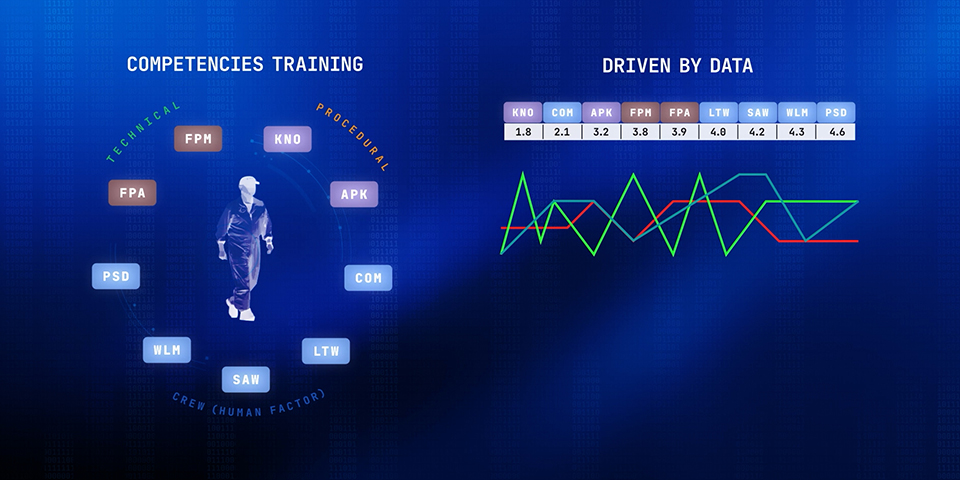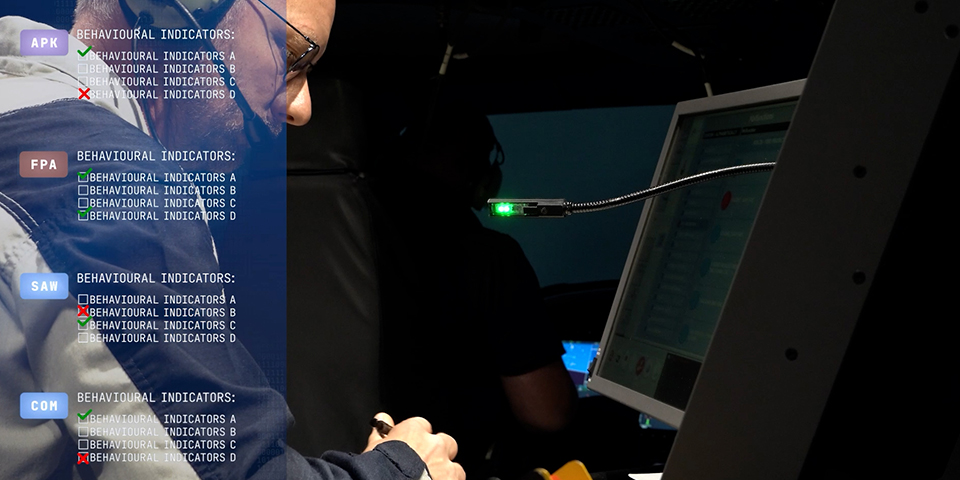The rotary wing industry is changing faster than ever before. To keep pace with these technological advances, the entire approach to pilot training also needs to evolve. Data-Driven Training has the potential to take pilot training into a new dimension, improving safety and providing a training experience that is both more realistic and highly tailored to each individual.
Leonardo Helicopters has been investing in the concept of Data-Driven Training over the past years. The starting point for the work we’re doing is a recognition that the traditional approach to pilot training has some limitations – historically there has been a strong emphasis on pilots completing a list of single events and manoeuvres with less focus on the skills, attitude and knowledge of the individual pilot.
So, how will Data-Driven Training change this approach? Capt. Luca Curreri is a former Italian Navy pilot who is now one the Leonardo Helicopters instructor pilots based at our Training Academy in Sesto Calende: “Today’s helicopter pilots face many and different demanding operational scenarios; they are more often flying in poor weather conditions and they operate modern aircraft with a high degree of technological complexity. Maneuver based training needs to evolve to Data-Driven Training as a step-change in training that allows us to use the data collected during each single training phase and use them to focus deeper on the human factors by developing the competences and behaviours that equip pilots to deal even with unforeseen events.
“We often hear about occurrences where pilots encountered a combination of malfunctions and unexpected events that they had not experienced before. The aim of Data-Driven Training is to address this by training pilots in the competences they need to respond effectively and correctly when faced with an unexpected scenario that poses a threat to flight safety.”

The benefits of Data-Driven Training
The first training syllabus we have been developing is focused on recurrent training and covers nine core competences that are rooted in human observable behaviours of the pilot.
From a customer perspective, what are the key benefits of adopting a Data-Driven Training approach? Capt. Curreri explains: “Number one is safety, which is always paramount in our industry, because we’re enabling pilots to build up a bank of knowledge on how to respond to events. Secondly, we are able to create highly realistic scenarios that match the operational needs of the pilots. Offshore pilots, for example, will fly demanding offshore missions in the simulator and the training is adaptive so that it changes based on the data retrieved and performance of the candidate sortie by sortie.
Data represents also a valuable source of information for facilitating the debriefing phase, and to find the root cause of threats.
“The final outcome is then a tailored training. What I need as a pilot will be different to the next person because we are all individuals. Data-Driven Training creates an individual training history for each pilot, it highlights their strengths and weaknesses and it can go with them through their career as a personalised record. In other words, we can create a training solution that is absolutely the best fit for you as a pilot.”

What comes next?
We started in 2022 a comprehensive training programme to all our flight instructors with the aim of having every instructor trained and qualified to deliver Data-Driven Training. So, when can customers expect to have access to the new training concept? “Data Driven Training is already available for the LH Customers and will be the new standard of training of the LH Training Academy Worldwide”. To find out more about Leonardo Helicopters’ development of Data-Driven Training, contact the Customer Account Managers team.

